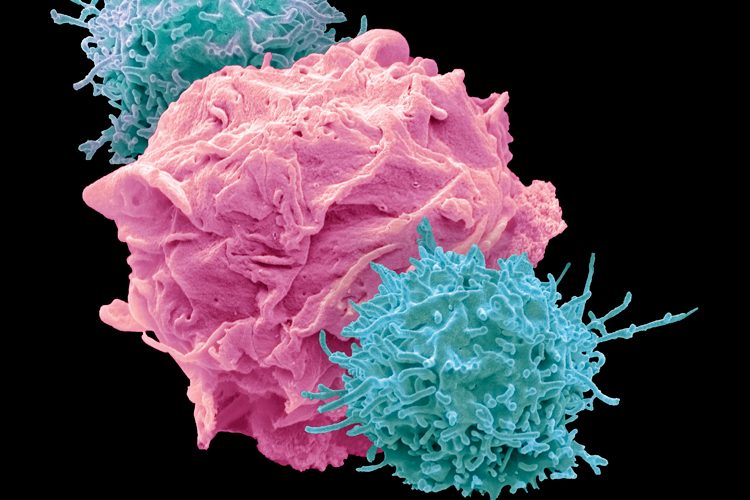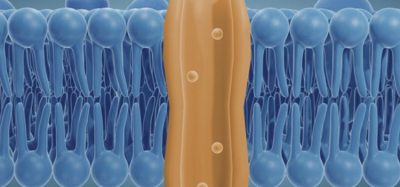Harnessing the CD24/Siglec-10 pathway: immunotherapy innovation
Posted: 17 October 2024 | Dr Yang Liu (OncoC4) | No comments yet
Renowned immunologist Dr Yang Liu shares his insights into the preclinical studies behind the development of drug candidates targeting the CD24/Siglec-10 pathway. He discusses the technical and regulatory hurdles of antibody development, how these therapies compare to existing immunotherapies, and the potential for personalised cancer treatment through biomarker development.


Can you elaborate on the preclinical studies and data that led to development of drug candidates along the CD24/Siglec-10 pathway?
The preclinical studies established the following points:
- While it is known that Cluster of Differentiation 24 (CD24) is over-expressed on cancer cells in almost 70 percent of human cancers, it is also broadly expressed in normal tissues. It is not known whether CD24 on cancer cells has a unique epitope that can be specifically targeted for cancer therapy. Our extensive data showed that CD24 expressed on normal cells and cancer cells can be differentiated with our novel anti-CD24 antibody, ONC-781. Further studies showed that the ONC-781 epitope expressed on cancer cells was shielded in normal cells by two glycans. We therefore called the epitope NeoCD24 to highlight its differentiation from what is recognised by other anti-CD24 antibodies.
- We showed that ONC-781 can be used as a platform to develop multiple modalities, including bispecific T cell engager, antibody-drug conjugates and chimeric antigen receptor T cell (CAR-T). Our work showed that the unique NeoCD24-targeting antibody is amenable to multiple therapeutic modalities and provides an opportunity to address unmet medical needs in both solid tumour and hematological malignancies.
- Our earlier studies revealed that CD24 interacted with sialic acid-binding immunoglobulin-like lectin 10 (Siglec-10) and established CD24 as the first endogenous ligand for SIGLEC family members. While its involvement in the do-not-eat-me signal from cancer has inspired therapeutic development of this pathway for oncology, the function of the innate immune checkpoint we identified in 20091 extends to both innate and adaptive immune responses. To explore its therapeutic potential in cancer and other immunological diseases, we developed an antagonist anti-Siglec-10 monoclonal antibody called ONC-841.
This year we completed investigational new drug (IND) enabling studies of ONC-841, which is an antagonist of Siglec-10, and received US Food and Drug Administration (FDA) approval for first-in-human study (FIH) in patients with solid tumours. The first patient has been dosed in the last quarter. CD24/Siglec-10 pathway is a validated target for COVID-192. To explore the potential of this pathway in inflammatory diseases, we generated an agonist fusion protein called AI-071. Our preclinical studies revealed that the agonist protects mice against inflammatory diseases in multiple organs, including the lung and liver. With the completion of FIH in healthy volunteers, we are on track to initiate Phase 2 studies to use AI-071 to treat lung diseases associated with viral infection and immunotherapy-associated adverse events in lung, liver and intestine.
What are the key technical and regulatory challenges in developing antibodies targeting the CD24/Siglec-10 pathway, and how can R&D leaders prioritise efforts to accelerate the translation of these therapies into clinical practice?
One of the key challenges is that, given the rapid evolution of this pathway, antibodies against either CD24 or Siglec-10 cross-react with their counterparts in animals. As a result, it is challenging to find appropriate animal models to perform preclinical pharmacology studies. Our approach is to use transgenic models that recapitulate human expression patterns of these targets. This allowed us to perform necessary toxicology studies for IND approval of ONC-841. With this approach, the regulatory pathway is not significantly different from other antibody-based drugs.
Biomarkers are redefining how precision therapies are discovered, validated and delivered.
This exclusive expert-led report reveals how leading teams are using biomarker science to drive faster insights, cleaner data and more targeted treatments – from discovery to diagnostics.
Inside the report:
- How leading organisations are reshaping strategy with biomarker-led approaches
- Better tools for real-time decision-making – turning complex data into faster insights
- Global standardisation and assay sensitivity – what it takes to scale across networks
Discover how biomarker science is addressing the biggest hurdles in drug discovery, translational research and precision medicine – access your free copy today
How does targeting the “do-not-eat-me” signal via the CD24/Siglec-10 pathway differ from existing immunotherapies like anti-PD-L1, and what strategic considerations should be made when deciding whether to incorporate these novel antibodies into combination therapy regimens?
By definition, the do-not-eat-me signal refers to phagocytosis of tumour cells by macrophages, although we and others have shown that the CD24/Siglec-10 pathway also regulates the function of T cells and NK cells. The broad regulatory function of this pathway suggests that we do not need to limit our clinical strategy until more information is gathered in the FIH trials.
Combination therapy is the best approach in immunotherapy. However, given the challenges of discerning the contribution of individual components in early trials, our main goal is to show the therapeutic activities of the drug in a basket trial. The results from such trials would inform whether and how future combination trials should be designed.
How can R&D teams leverage emerging insights from the CD24/Siglec-10 pathway to develop biomarkers that predict patient response to these antibodies, ensuring a more personalised approach to cancer treatment?
Biomarkers are the holy grail of clinical trials. One may start by using target expression in the tumour microenvironment to guide the selection of indications and patient populations within the indication.
What factors should decision makers consider when selecting patient populations for clinical trials of CD24/Siglec-10-targeted therapies, especially in cases where patients have failed to respond to existing immunotherapies?
Given the fact that different therapeutic modalities may have different requirements, it is hard to generalise drugs that target the CD24/Siglec-10 pathway. We take the target expression and its relation to tumour prognosis as the baseline consideration for indication selection.
In terms of manufacturing and scalability, what are the anticipated challenges associated with the production of antibodies targeting Siglec-10 and CD24?
There are no unique challenges for antibodies targeting this pathway. The scalability is antibody-specific, and generally must be considered at clonal selection and process development.
References
- Chen GY ., Tang J, Zheng P, Liu Y. CD24 and Siglec-10 Selectively Repress Tissue Damage-Induced Immune Responses. Science. 2009 Mar 5;323(5922):1722–5.
- Welker J, Pulido JD, Catanzaro AT, Malvestutto CD, Li Z, Cohen JB, et al. Efficacy and safety of CD24Fc in hospitalised patients with COVID-19: a randomised, double-blind, placebo-controlled, phase 3 study. The Lancet Infectious Diseases [Internet]. 2022 May 1 [cited 2024 Oct 10];22(5):611–21. Available from: https://www.thelancet.com/journals/laninf/article/PIIS1473-3099(22)00058-5/fulltext
About the author
Yang Liu, PhD, Founder, Chairman, Chief Executive Officer, and Chief Scientific Officer at OncoC4


Dr Liu received his PhD from the Australian National University and completed his postdoctoral fellowship at Yale University. Prior to serving full time as Chief Executive Officer of OncoC4, he was on faculty at multiple academic institutions, including Yale University, New York University, Ohio State University, the Children’s National Medical Center, and the Institute of Human Virology at the University of Maryland School of Medicine.
Related topics
Antibodies, Biomarkers, Cancer research, Drug Targets, Immunotherapy
Related conditions
Cancer
Related organisations
OncoC4
Related people
Dr Yang Liu (OncoC4)








